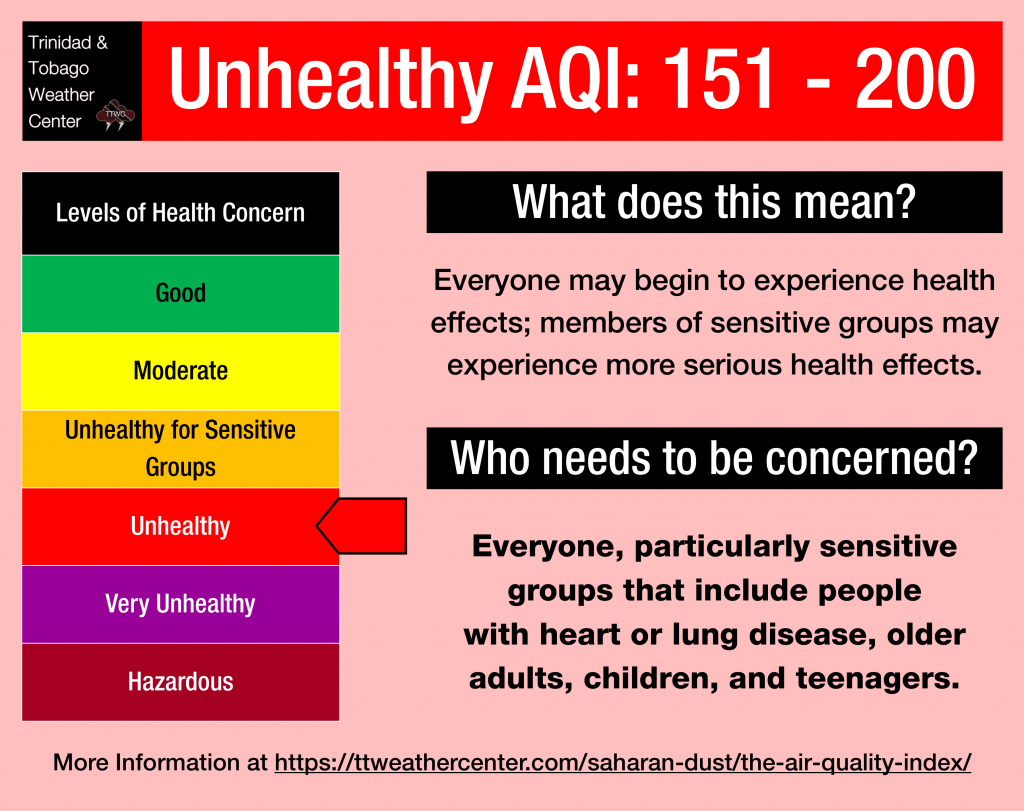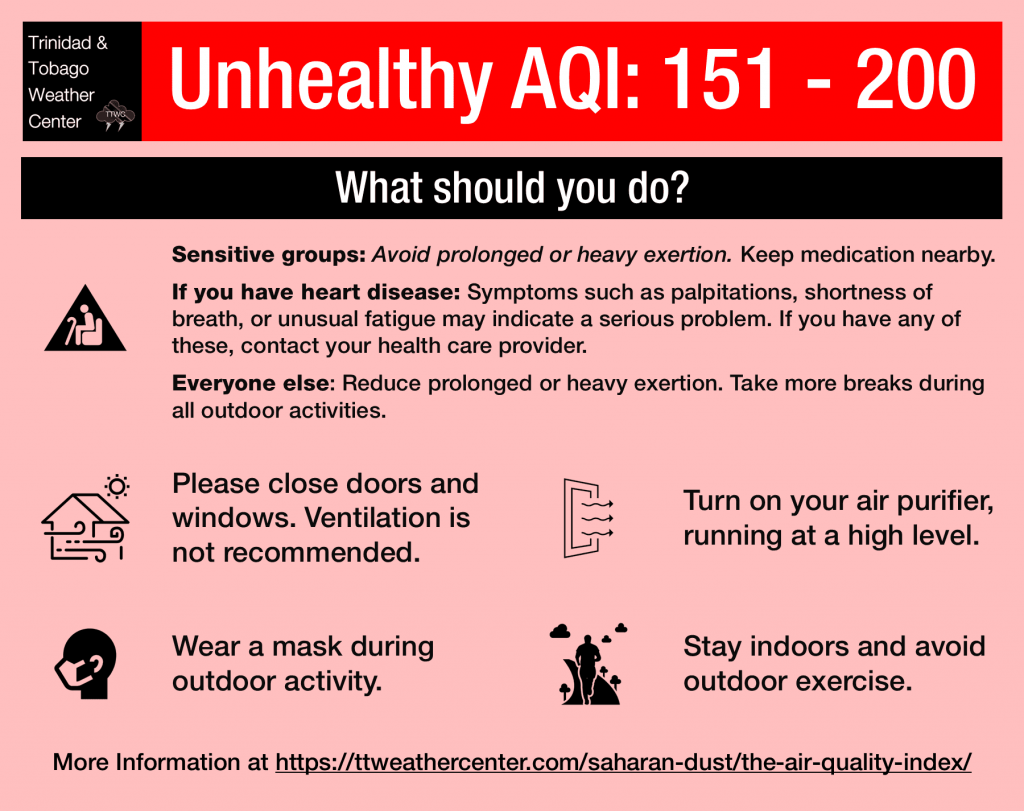Saharan Dust levels are already on the increase across parts of the Leewards, with a major surge of dust forecast to move across the Lesser Antilles this week. Peak concentrations are forecast from Monday through Wednesday, particularly across the northern Windwards, French Antilles, and the Leeward Islands. Air quality and visibility are expected to be greatly reduced.
What you need to know
— Saharan Dust Surges: A significant surge of Saharan Dust, one of the most concentrated for 2023, is forecast to move across the Lesser Antilles from tonight (Sunday), with peak concentrations forecast from Monday, August 14th, through Wednesday, August 16th, 2023. Across T&T, moderate to high concentrations of dust is forecast through Friday, with improvement forecast by the weekend. Across the Leewards and northern Windwards, moderate to high concentrations are forecast to linger through the forecast period.
— Impacts: Through the next seven to ten days, air quality levels across Trinidad and Tobago are forecast to remain between moderate and unhealthy for sensitive groups, occasionally reaching unhealthy levels between Monday and Wednesday.
— What Should You Do: The general population will be required to exercise caution between Monday through Wednesday, with sensitive groups requiring the necessary precautions through Friday.
Current AQI Levels Across T&T
The official air quality monitoring stations from the Environmental Management Agency (EMA) at Point Lisas, San Fernando, and Arima are reporting moderate quality levels. Stations at Beetham and Signal Hill, Tobago, are not reporting PM2.5 or PM10 data as of Sunday afternoon.
These measurements are based on PM2.5 (particulates the size of 2.5 micrometers and smaller, usually associated with increases in Saharan Dust, vehicle exhaust, and smoke) and PM10 particulates.
Over the last 24 hours, visibility remained unaffected by Saharan Dust and smoke at the A.N.R. Robinson International Airport at Crown Point, Tobago, and at the Piarco International Airport, Trinidad.
Saharan Dust Forecast

A major surge of Saharan Dust is on our doorstep, with concentrations significantly increasing overnight tonight through tomorrow, affecting both air quality, which can drop to unhealthy levels, and visibility, which may drop between 5 and 8 kilometers across Trinidad and Tobago.
The peak of this dust event is forecast between Monday morning and Wednesday night, with the highest dust concentrations between the Leewards and northern Windwards, where air quality levels could reach very unhealthy levels.
For Trinidad and Tobago, moderate to high concentrations of Saharan Dust is forecast to linger across the country through the end of the week, Friday, August 18th, 2023, with mild concentrations remaining across the area through the end of the forecast period (August 22nd). Across the Leewards and French Antilles, moderate concentrations are forecast to linger from Friday onwards.
What does this mean for you?


We’re in a period where the Intertropical Convergence Zone and tropical waves and occasional tropical cyclones may shield Trinidad and Tobago from the Saharan Dust events. While Tropical Waves play a notable role in moving dust across the Atlantic and the Eastern Caribbean, these periodic tropical waves also improve air quality.
The concentration of the dust that follows the wave depends on its strength as it moves off the West African Coast. This is because of stronger thunderstorms across Central Africa. As strong winds move downward and outward from these thunderstorms, the wind kicks up dust as it moves across parts of the Saharan Desert and transports it into the upper atmosphere. This “plume” of dust follows the axis of the wave as it progresses westward into the Atlantic.
Dust that makes it into the upper levels of the atmosphere can then get transported across the Atlantic Ocean. The plumes of dust eventually affect the Eastern Caribbean.
Larger, more concentrated plumes of Saharan dust begin in April and continue through November.











